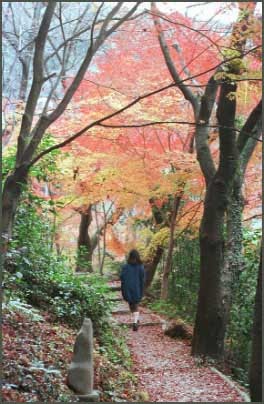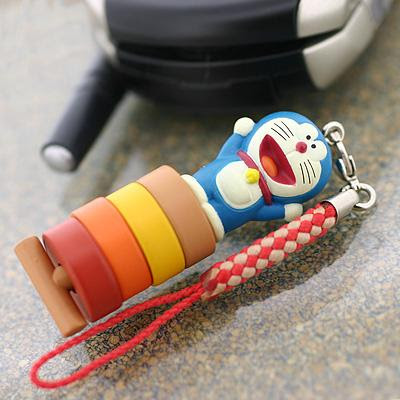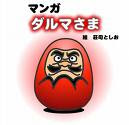LINK
http://edoflourishing.blogspot.jp/2014/12/kasugai-clamp-cleat.html
http://edoflourishing.blogspot.jp/2014/12/kasugai-clamp-cleat.html
:::::::::::::::::::::::::::::::::::::::::::::::::::::::::::::::::::::::::::::::::::::::::::::::::::::::::::::::::::::::::::::::::::::::::::::::::::::::::::::::::::::::::::::::::::::
kasugai 鎹 / かすがい clamp, cramp, cleat, staple
. Japanese Architecture 日本建築 technical terms .
- Introduction -

. My collection in facebook .
:::::::::::::::::::::::::::::::::::::::::::::::::::::::::::::::::::::::::::::::::::::::::::::::::::::::::::::::::::::::::::::::::::::::::::::::::::::::::::::::::::::::::::::::::::::
- quote
kasugai - cleat
A strip of metal or wood driven into two members to hold them together securely. A metal cleat that is bent at each end has sharp points.

a) watari 渡り b) tsume 爪
Each end of the cleat is pounded into one part of the two members to be joined. The bent parts, that function like nails, are called tsume 爪 and the center is called watari 渡り meaning cross over.
- source : JAANUS
..............................................................................................................................................
- from our kasugai discussion on facebook -
forged iron staple for a blacksmith
"cramp" in carpentry
and joinery usually refers to a mechanical "clamp" used to hold parts of an assemblage together while they are in process of construction.
:::::::::::::::::::::::::::::::::::::::::::::::::::::::::::::::::::::::::::::::::::::::::::::::::::::::::::::::::::::::::::::::::::::::::::::::::::::::::::::::::::::::::::::::::::::

- quote
Children are Staples (ko wa kasugai)
There is a Japanese saying to the effect that "Children are Staples," ("ko wa kasugai" 子はカスガイ・鎹).
In Japanese culture, the love between men and women is seen as being beautiful and natural, but like most things in nature, not particularly permanent. Love, between women and men does not last forever. There is no bridge across forever, no soulmate, no happy end. Japanese love stories tend, or tended, to end in double suicide: the most romantic outcome that one can hope for, at least far more so than domestic bliss.
The love or at least the relationship between parents and children, between ancestors and their descendants is however seen as being eternal. Parents and offspring are considered to be indivisible. No one is born again. This goes for the relationship between children and both mothers and fathers.
So when a couple have a child, while their own emotions for each other may wax and wane, they will be irretrievable linked forever in the flesh of their flesh, their child.
Hence, just as a staple can be used to join two pieces of wood together, so a children are considered to be like staples that join their parents together forever.
Related there are :
Children are the shackles of this world and the next
ko wa sankai no kubikase 子は三界の首枷
which refers to pretty much the same thing.
- source : ww.burogu.com/2010
:::::::::::::::::::::::::::::::::::::::::::::::::::::::::::::::::::::::::::::::::::::::::::::::::::::::::::::::::::::::::::::::::::::::::::::::::::::::::::::::::::::::::::::::::::::

かすがい【鎹】
① -- 二本の材木をつなぎとめるための両端の曲がった大釘。
② -- 二つのものをつなぎとめる役をするもの。 「子は-」
③ -- 戸締まりに用いる金具。かけがね。 「 -もとざしもあらばこそ/催馬楽」
- source : 世界大百科事典
1 - a metal clamp to hold wood together
2 - to hold something together, a bond (e.g. a child)
3 - kakegane, a kind of metal door lock
.......................................................................
かすがい clamp cramp
丸鋼、角形鋼、平鋼などの鉄棒の両端を折り曲げ、先端を爪(つめ)状にとがらせた建築金物で、二つの部材をつなぎ合わせるために金槌(かなづち)などで打ち込む。丸かすがい、角かすがい、平かすがいの名称がある。折り曲げた部分を爪、中央部を渡りといい、木材や石材を相互に緊結させるために用いる。建具や家具に使用する長さ3センチメートル程度のものから、建物の軸組を緊結する長さ18センチメートル程度のものまで各種あり、さらに、先端の爪が互いに直角になるような手違いかすがい、一方を短冊状にしてこれに釘(くぎ)穴をつけた目かすがいがある。前者は桁(けた)と垂木(たるき)に、後者は縁甲板と根太(ねだ)の取り付けなどに用いる。また両爪の長いものは輪かすがいといわれ、形状、名称など使用場所によっても異なる。古くは加須可比とも書き、建具などをつなぎ止めるために用いられた金物で、掛金、繋金(かきがね)を意味した。
「子は(夫妻の)かすがい」なども、つなぎ止める意味からのことばといえる。
[坂田種男]
- source : 日本大百科全書
:::::::::::::::::::::::::::::::::::::::::::::::::::::::::::::::::::::::::::::::::::::::::::::::::::::::::::::::::::::::::::::::::::::::::::::::::::::::::::::::::::::::::::::::::::::
- quote
Kasugai shi 春日井市 Kasugai town
is a city located in Aichi Prefecture, north of the Nagoya metropolis..
As of February 2012, the city has an estimated population of 306,573 and a population density of 3,310 persons per km². The total area is 92.71 km².
Former Nagoya Airport, is located between Kasugai and neighboring Komaki.
- - History
During the Meiji period, the area was organized into villages under Higashikasugai District, with the town of Kachigawa established on July 25, 1900. On June 1, 1943, Kachigawa was merged with neighboring villages of Toriimatsu and Shinogi to form the city of Kasugai. In 1958, Kasugai annexed the neighboring towns of Sakashita and Kozoji. Kasugai gained Special city status on April 1, 2001.
- source : wikipedia
- - - - - The mascots of Kasugai
Haruyo - Nichimaru and Inosuke

................................................
- quote
Kasugai town, Sumirezuka in Autumn

When walking up the path from the garden of Utsutsu Shrine to "Sumirezuka", you will see an array of stone monuments.
These monuments carry "Haiku" poems dedicated to Matsuo Basho an ancient "Haiku"poet.
- - - - - -more interesting English links to Kasugai Town
Kasugai City Tofu Memorial Museum - Ono no Tōfū 小野道風 (894-966)
Festivals . . . etc
- source : www.city.kasugai.lg.jp
..............................................................................................................................................
- quote
Kasugai Snack Foods 春日井 製菓 Kasugai Seika
a Japanese snack company that exports to the United States and United Kingdom. It mainly exports candy, but also Japanese snacks.

The company was founded in 1923 by Rai Winsuto in Kasugai, Aichi. It began as a small shop selling dried snacks such as nuts, peas, and fruit. However, since then they have become a company that produces many different snack products that they export to other countries.
- source : wikipedia
:::::::::::::::::::::::::::::::::::::::::::::::::::::::::::::::::::::::::::::::::::::::::::::::::::::::::::::::::::::::::::::::::::::::::::::::::::::::::::::::::::::::::::::::::::::
- - - - - H A I K U and S E N R Y U - - - - -
あばらやの戸のかすがいよなめくじり
abaraya no to no kasugai yo namekujiri
the clamp on the door
of my tumbledown home -
a slug
. Nozawa Boncho 野沢凡兆 . (1640 - 1714)

. namekujiri なめくじり slug .
namekuji 蛞蝓 (なめくじ) slug / namekujira なめくじら
- - kigo for all summer -
..............................................................................................................................................
日の盛鎹打たる仁王の脛
hi no sakari kasugai uchitaru nioo no sune
the sun at its best -
hitting a clamp
in the shin of Nio
Takazawa Ryooichi 高澤良一 Takazawa Ryoichi

. Nioo 仁王 Nio, Deva Kings .
. hizakari 日盛 (ひざかり) "the sun at its best" .
..... hi no sakari 日の盛(ひのさかり
the strong heat of the day
- - kigo for late summer - -
..............................................................................................................................................

白玉や鎹の子も十七に
shiratama ya kasugai no ko mo juushichi ni
white dumplings -
our child, our bond
now already seventeen
Tr. Gabi Greve
Suzuku Shigeo 鈴木しげを
. shiratama 白玉 (しらたま) Shiratama Dango .
"white treasure, white pearls"
- - kigo for all summer - -
:::::::::::::::::::::::::::::::::::::::::::::::::::::::::::::::::::::::::::::::::::::::::::::::::::::::::::::::::::::::::::::::::::::::::::::::::::::::::::::::::::::::::::::::::::::

- - - To join me on facebook, click the image !
:::::::::::::::::::::::::::::::::::::::::::::::::::::::::::::::::::::::::::::::::::::::::::::::::::::::::::::::::::::::::::::::::::::::::::::::::::::::::::::::::::::::::::::::::::::
. Japanese Architecture - Interior Design - The Japanese Home .
. - Doing Business in Edo - 商売 - Introduction .
[ . BACK to DARUMA MUSEUM TOP . ]
[ . BACK to WORLDKIGO . TOP . ]
:::::::::::::::::::::::::::::::::::::::::::::::::::::::::::::::::::::::::::::::::::::::::::::::::::::::::::::::::::::::::::::::::::::::::::::::::::::::::::::::::::::::::::::::::::::
-
kasugai 鎹 / かすがい clamp, cramp, cleat, staple
. Japanese Architecture 日本建築 technical terms .
- Introduction -

. My collection in facebook .
:::::::::::::::::::::::::::::::::::::::::::::::::::::::::::::::::::::::::::::::::::::::::::::::::::::::::::::::::::::::::::::::::::::::::::::::::::::::::::::::::::::::::::::::::::::
- quote
kasugai - cleat
A strip of metal or wood driven into two members to hold them together securely. A metal cleat that is bent at each end has sharp points.

a) watari 渡り b) tsume 爪
Each end of the cleat is pounded into one part of the two members to be joined. The bent parts, that function like nails, are called tsume 爪 and the center is called watari 渡り meaning cross over.
- source : JAANUS
..............................................................................................................................................
- from our kasugai discussion on facebook -
forged iron staple for a blacksmith
"cramp" in carpentry
and joinery usually refers to a mechanical "clamp" used to hold parts of an assemblage together while they are in process of construction.
:::::::::::::::::::::::::::::::::::::::::::::::::::::::::::::::::::::::::::::::::::::::::::::::::::::::::::::::::::::::::::::::::::::::::::::::::::::::::::::::::::::::::::::::::::::

- quote
Children are Staples (ko wa kasugai)
There is a Japanese saying to the effect that "Children are Staples," ("ko wa kasugai" 子はカスガイ・鎹).
In Japanese culture, the love between men and women is seen as being beautiful and natural, but like most things in nature, not particularly permanent. Love, between women and men does not last forever. There is no bridge across forever, no soulmate, no happy end. Japanese love stories tend, or tended, to end in double suicide: the most romantic outcome that one can hope for, at least far more so than domestic bliss.
The love or at least the relationship between parents and children, between ancestors and their descendants is however seen as being eternal. Parents and offspring are considered to be indivisible. No one is born again. This goes for the relationship between children and both mothers and fathers.
So when a couple have a child, while their own emotions for each other may wax and wane, they will be irretrievable linked forever in the flesh of their flesh, their child.
Hence, just as a staple can be used to join two pieces of wood together, so a children are considered to be like staples that join their parents together forever.
Related there are :
Children are the shackles of this world and the next
ko wa sankai no kubikase 子は三界の首枷
which refers to pretty much the same thing.
- source : ww.burogu.com/2010
:::::::::::::::::::::::::::::::::::::::::::::::::::::::::::::::::::::::::::::::::::::::::::::::::::::::::::::::::::::::::::::::::::::::::::::::::::::::::::::::::::::::::::::::::::::

かすがい【鎹】
① -- 二本の材木をつなぎとめるための両端の曲がった大釘。
② -- 二つのものをつなぎとめる役をするもの。 「子は-」
③ -- 戸締まりに用いる金具。かけがね。 「 -もとざしもあらばこそ/催馬楽」
- source : 世界大百科事典
1 - a metal clamp to hold wood together
2 - to hold something together, a bond (e.g. a child)
3 - kakegane, a kind of metal door lock
.......................................................................
かすがい clamp cramp
丸鋼、角形鋼、平鋼などの鉄棒の両端を折り曲げ、先端を爪(つめ)状にとがらせた建築金物で、二つの部材をつなぎ合わせるために金槌(かなづち)などで打ち込む。丸かすがい、角かすがい、平かすがいの名称がある。折り曲げた部分を爪、中央部を渡りといい、木材や石材を相互に緊結させるために用いる。建具や家具に使用する長さ3センチメートル程度のものから、建物の軸組を緊結する長さ18センチメートル程度のものまで各種あり、さらに、先端の爪が互いに直角になるような手違いかすがい、一方を短冊状にしてこれに釘(くぎ)穴をつけた目かすがいがある。前者は桁(けた)と垂木(たるき)に、後者は縁甲板と根太(ねだ)の取り付けなどに用いる。また両爪の長いものは輪かすがいといわれ、形状、名称など使用場所によっても異なる。古くは加須可比とも書き、建具などをつなぎ止めるために用いられた金物で、掛金、繋金(かきがね)を意味した。
「子は(夫妻の)かすがい」なども、つなぎ止める意味からのことばといえる。
[坂田種男]
- source : 日本大百科全書
:::::::::::::::::::::::::::::::::::::::::::::::::::::::::::::::::::::::::::::::::::::::::::::::::::::::::::::::::::::::::::::::::::::::::::::::::::::::::::::::::::::::::::::::::::::
- quote
Kasugai shi 春日井市 Kasugai town
is a city located in Aichi Prefecture, north of the Nagoya metropolis..
As of February 2012, the city has an estimated population of 306,573 and a population density of 3,310 persons per km². The total area is 92.71 km².
Former Nagoya Airport, is located between Kasugai and neighboring Komaki.
- - History
During the Meiji period, the area was organized into villages under Higashikasugai District, with the town of Kachigawa established on July 25, 1900. On June 1, 1943, Kachigawa was merged with neighboring villages of Toriimatsu and Shinogi to form the city of Kasugai. In 1958, Kasugai annexed the neighboring towns of Sakashita and Kozoji. Kasugai gained Special city status on April 1, 2001.
- source : wikipedia
- - - - - The mascots of Kasugai
Haruyo - Nichimaru and Inosuke

................................................
- quote
Kasugai town, Sumirezuka in Autumn

When walking up the path from the garden of Utsutsu Shrine to "Sumirezuka", you will see an array of stone monuments.
These monuments carry "Haiku" poems dedicated to Matsuo Basho an ancient "Haiku"poet.
- - - - - -more interesting English links to Kasugai Town
Kasugai City Tofu Memorial Museum - Ono no Tōfū 小野道風 (894-966)
Festivals . . . etc
- source : www.city.kasugai.lg.jp
..............................................................................................................................................
- quote
Kasugai Snack Foods 春日井 製菓 Kasugai Seika
a Japanese snack company that exports to the United States and United Kingdom. It mainly exports candy, but also Japanese snacks.

The company was founded in 1923 by Rai Winsuto in Kasugai, Aichi. It began as a small shop selling dried snacks such as nuts, peas, and fruit. However, since then they have become a company that produces many different snack products that they export to other countries.
- source : wikipedia
:::::::::::::::::::::::::::::::::::::::::::::::::::::::::::::::::::::::::::::::::::::::::::::::::::::::::::::::::::::::::::::::::::::::::::::::::::::::::::::::::::::::::::::::::::::
- - - - - H A I K U and S E N R Y U - - - - -
あばらやの戸のかすがいよなめくじり
abaraya no to no kasugai yo namekujiri
the clamp on the door
of my tumbledown home -
a slug
. Nozawa Boncho 野沢凡兆 . (1640 - 1714)

. namekujiri なめくじり slug .
namekuji 蛞蝓 (なめくじ) slug / namekujira なめくじら
- - kigo for all summer -
..............................................................................................................................................
日の盛鎹打たる仁王の脛
hi no sakari kasugai uchitaru nioo no sune
the sun at its best -
hitting a clamp
in the shin of Nio
Takazawa Ryooichi 高澤良一 Takazawa Ryoichi

. Nioo 仁王 Nio, Deva Kings .
. hizakari 日盛 (ひざかり) "the sun at its best" .
..... hi no sakari 日の盛(ひのさかり
the strong heat of the day
- - kigo for late summer - -
..............................................................................................................................................

白玉や鎹の子も十七に
shiratama ya kasugai no ko mo juushichi ni
white dumplings -
our child, our bond
now already seventeen
Tr. Gabi Greve
Suzuku Shigeo 鈴木しげを
. shiratama 白玉 (しらたま) Shiratama Dango .
"white treasure, white pearls"
- - kigo for all summer - -
:::::::::::::::::::::::::::::::::::::::::::::::::::::::::::::::::::::::::::::::::::::::::::::::::::::::::::::::::::::::::::::::::::::::::::::::::::::::::::::::::::::::::::::::::::::

- - - To join me on facebook, click the image !
:::::::::::::::::::::::::::::::::::::::::::::::::::::::::::::::::::::::::::::::::::::::::::::::::::::::::::::::::::::::::::::::::::::::::::::::::::::::::::::::::::::::::::::::::::::
. Japanese Architecture - Interior Design - The Japanese Home .
. - Doing Business in Edo - 商売 - Introduction .
[ . BACK to DARUMA MUSEUM TOP . ]
[ . BACK to WORLDKIGO . TOP . ]
:::::::::::::::::::::::::::::::::::::::::::::::::::::::::::::::::::::::::::::::::::::::::::::::::::::::::::::::::::::::::::::::::::::::::::::::::::::::::::::::::::::::::::::::::::::
-









































